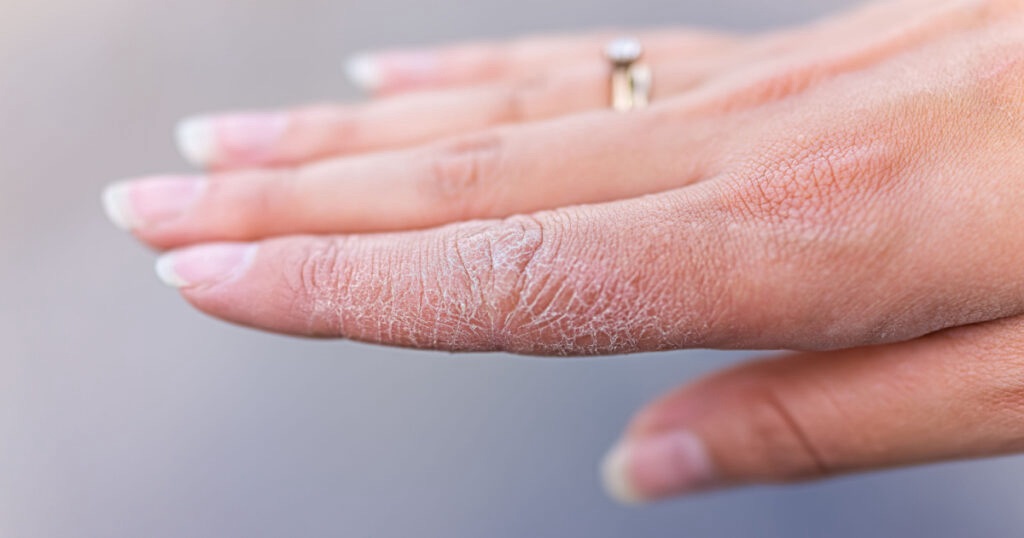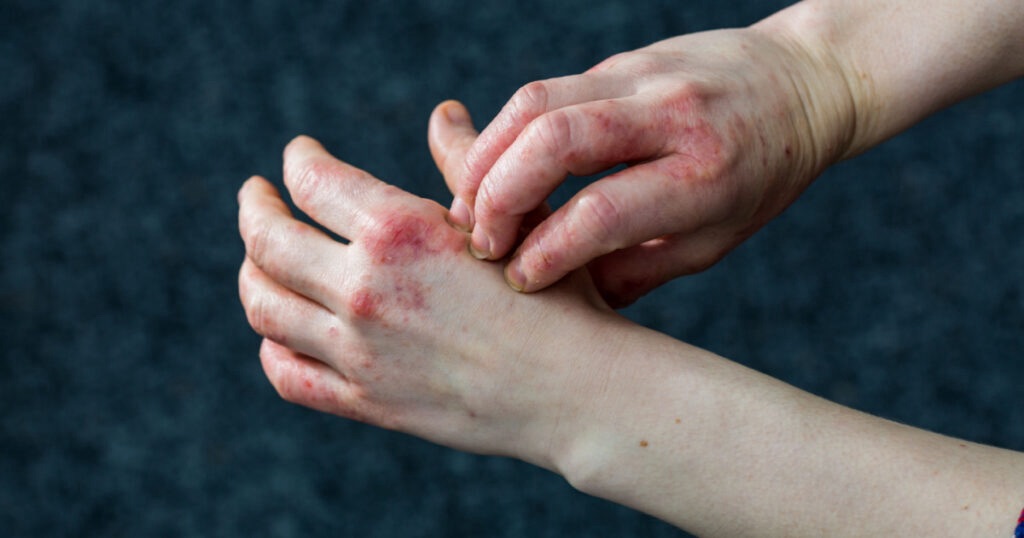Dyshidrotic eczema is a skin condition that mainly affects the hands and feet. It causes small, itchy blisters that can be painful and uncomfortable.
Though it is not contagious, it tends to flare up in cycles, especially in the spring. While there is no cure, treatments can help manage the symptoms.
What is Dyshidrotic Eczema?
Dyshidrotic eczema, also called pompholyx, causes tiny, deep-seated blisters on the palms, fingers, and soles of the feet. These blisters can be intensely itchy, and as they heal, the skin may crack, peel, and become scaly.

The exact cause is unknown, but it is linked to allergies, stress, excessive sweating, and skin sensitivities. People with contact dermatitis, atopic eczema, or hay fever are at a higher risk of developing it.
Symptoms
• Small, deep blisters on hands, feet, and toes
• Intense itching and redness
• Flaky, scaly, or cracked skin
• Swelling and pain
Treatment Options
Although dyshidrotic eczema cannot be cured, symptoms can be controlled with medications and skincare routines. Common treatments include:
• Corticosteroid creams or ointments to reduce inflammation
• Antihistamines to relieve itching
• UV light therapy for severe cases
• Draining large blisters (by a doctor)
• Immune-suppressing ointments like Protopic or Elidel

Natural Remedies
Many people find relief using home treatments:
• Cold Compresses – Apply for 15 minutes, several times a day, then moisturize.
• Aloe Vera – Soothes irritated skin and speeds healing.
• Oatmeal – Reduces inflammation when applied as a paste or used in a bath.
Managing Dyshidrotic Eczema
Since this condition has no cure, preventing flare-ups is key. Avoid harsh soaps, excessive hand-washing, and allergens.
Use gentle moisturizers, wear protective gloves, and manage stress to reduce symptoms. If you suspect you have dyshidrotic eczema, consult a dermatologist for a treatment plan.


